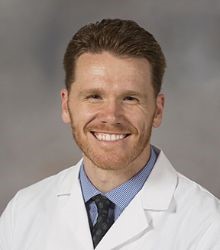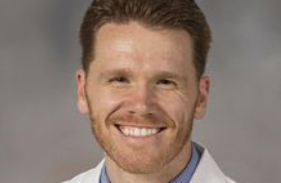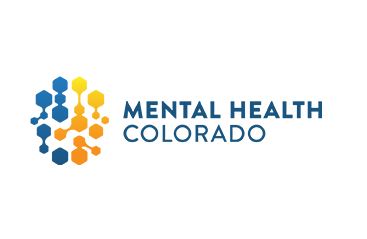I had the pleasure of chatting with Dr. Jacob Moremen, a cardiothoracic surgeon and Assistant Professor of Thoracic Surgery at the University of Mississippi Medical Center. We discussed his motivation for ensuring that his patients have quicker, less painful recovery experience through the use of non-opioid options. Our conversation is summarized below.
 Tell us about yourself—what is your background and what sparked your interest in acute pain management?
Tell us about yourself—what is your background and what sparked your interest in acute pain management?
Like most clinicians, I did a little hopping around during my clinical training. I started off at the University of Kentucky for my undergraduate and medical school education. I completed my general surgery residency in Macon, Georgia at Mercer University. Then, my Thoracic fellowship was at Indiana University followed by Jackson, Mississippi for my first job. I have now been at the University of Mississippi for 5 years. Br training, I am a cardiothoracic surgeon and principally practice in noncardiac thoracic surgery, which typically includes procedures related to lung cancer, esophageal cancer, some benign disorders in the chest. Pain management is mostly a pragmatic concern for me; I don’t like to see the patient suffering. Chest surgery hurts and we had to come up with different ways to manage pain for patients. Pain is a daily concern for me. I want to make sure I provide care for a patient that isn’t going to leave them in worse shape than when they came in.
Can you tell us a bit about your hospital?
Although someone from a bigger city like Atlanta or Boston would laugh at this, the University of Mississippi hospital in Jackson is an urban hospital with approximately 250 adult beds. It’s a level one trauma center and the only academic center in the state. In the academic setting, I train and teach both medical students and residents.
What patient populations do you serve?
I see men and women equally—lung cancer doesn’t discriminate terribly, and esophageal cancer tends to favor men, but by and large, it is an even mix. It tends to be that the diseases we treat affect people in their later stages of life, meaning most of my patients are over 60.
What inspired your group to create a non-opioid perioperative pain management experience for patients?
I started the patient education piece during my clinical training. During my fellowship, I was assigned to give a presentation on pain management. After I studied and read up on the different aspects of pain management, I became interested in some of the different facets of pain control, particularly in the non-opioid space. During my training, at various times, I heard a couple of key leaders in the non-opioid space give lectures on non-opioid pain management and conducted my own “clinical trial” hat looked at non-opioid pain management. Unfortunately I didn’t get to see it through completion because my fellowship wrapped up. When I got to the University of Mississippi, it was on my mind to try to implement what I had learned over those years. I quickly realized that we needed some sort of process. We tried various non-opioid options when we first started. We also asked around to learn the best options and read up on the literature. Eventually, we designed an in-house multimodal, ERAS protocol using non-opioid methods. Part of that process included getting pharmacy committee approval for some of the pricier elements included in our protocol. We haven’t followed these patients in a true clinical trial capacity, but anecdotally, the impact of our protocol was dramatic if you compare patient satisfaction and pain scores before we implemented our protocol compared to after. Since we implemented our protocol, people have been getting out of the hospital faster, they have less complications post-surgery, less pain, and are using less narcotics. It is very gratifying to check on a patient and ask them about their pain and they say, “What pain?” That patient feedback seems to be more and more common after we started using our protocol. As we got more thorough, the need for opioids decreased. It’s important to tell the patient what to expect so they have a reference point of where to start. Many patients don’t think they will have pain after surgery, so giving them a realistic viewpoint on how they might feel and what measures to have in place, like extra help at home for a few days or weeks, are appreciated by the patient.
What positive downstream effects have you seen since you implemented your program?
Recent [state level] legislation made it hard for us to give many opioids after surgery. It also became harder for us to give refills. So, fortunately for us, our protocol helped us to be ahead of the curve when the state started to crunch down on opioid prescribing and we weren’t highly impacted. Through our ERAS protocol, we were reducing the chance for opioid-naive patients to become addicted and better mitigating the impact of pain on chronic users. We were also getting hospital beds cleared quicker because there were less complications and better recovery. Everyone is aware of the importance of hospital beds now because of COVID, but this was true for us even before the pandemic. It also gives me more confidence that my patients are prepared for surgery because of our patient education around pain expectation prior to the procedure. People want to be functional and get through surgery easily. Because we have had such consistent good outcomes, I feel comfortable telling patients that it is reasonable to expect that they will be up and moving soon after surgery. Patients are always happy to hear this because they want to feel like they will not have to miss a lot of work.
What are the next steps and future directions?
We continue to follow industry and the literature to stay updated on innovation, non-opioid approaches, but mainly our goal is to continue to fine tune our own processes to better improve patient outcomes.



